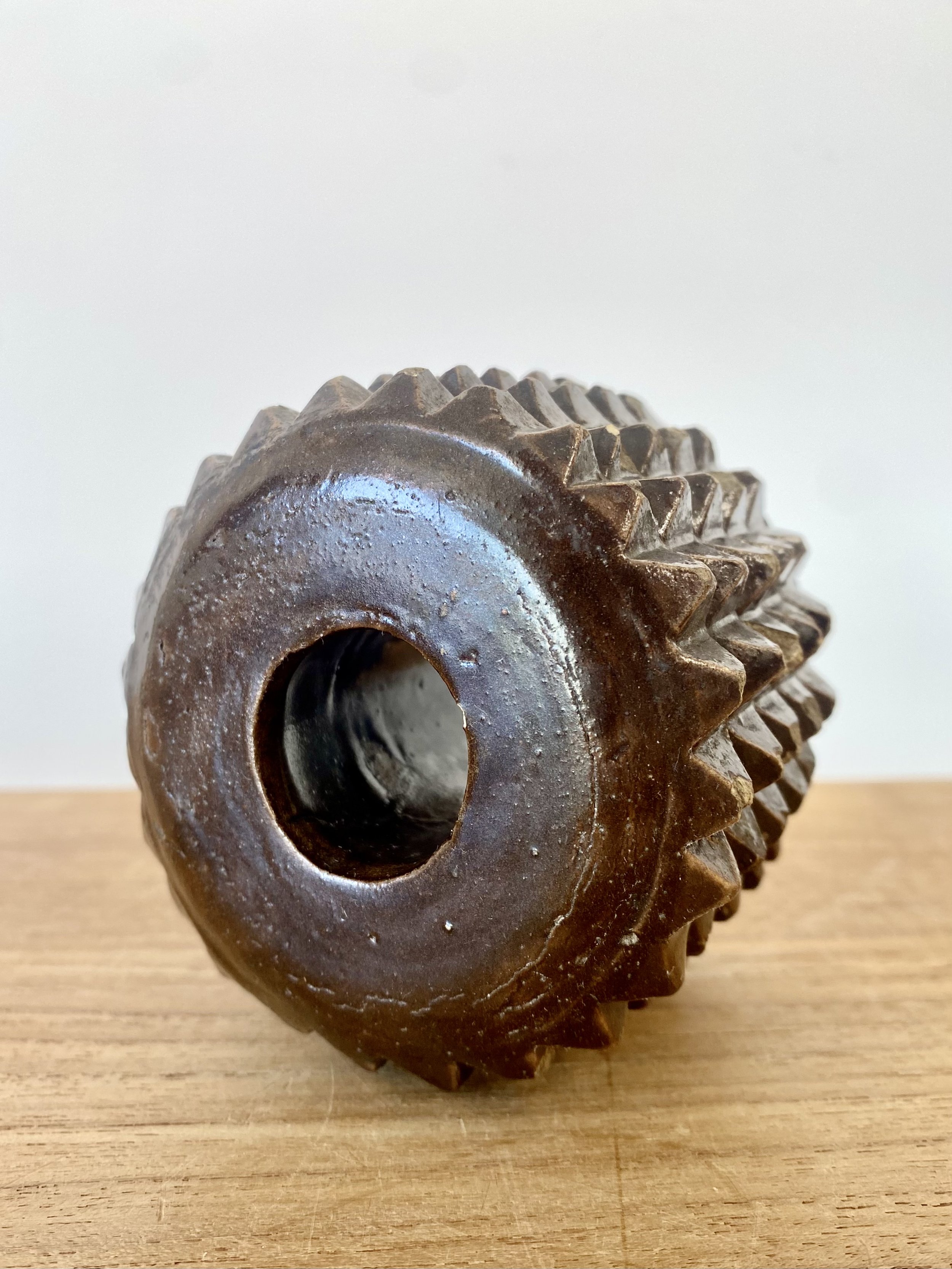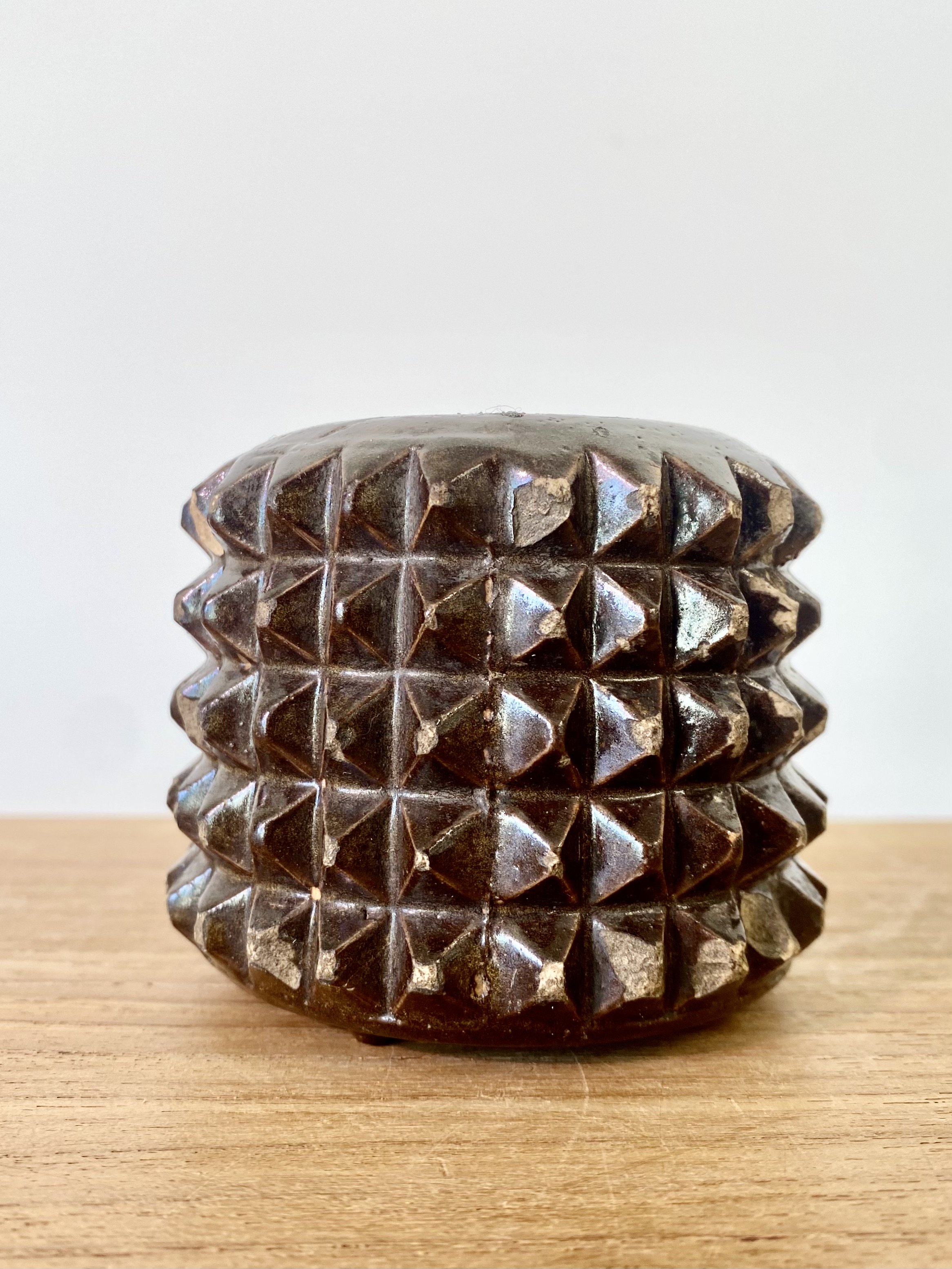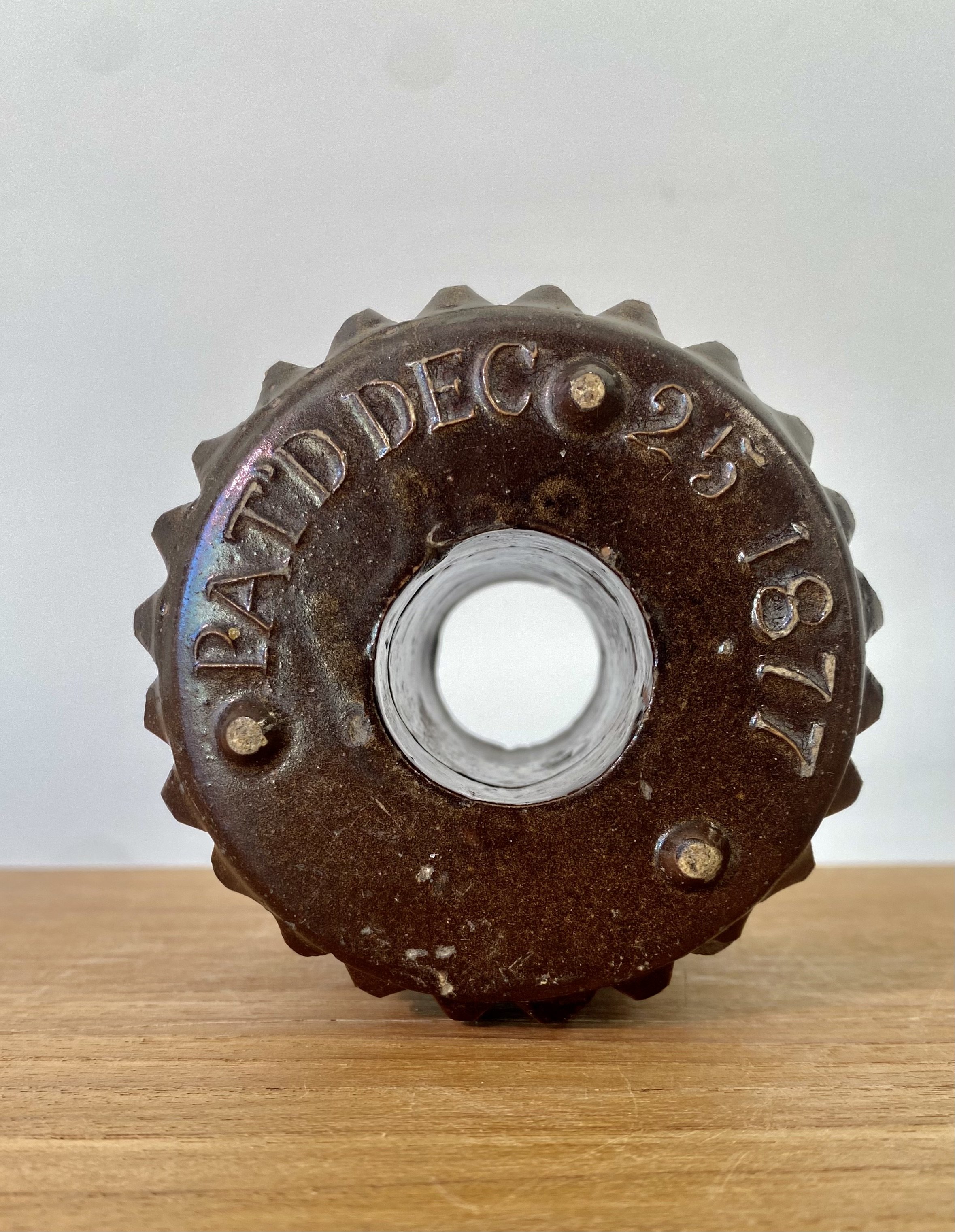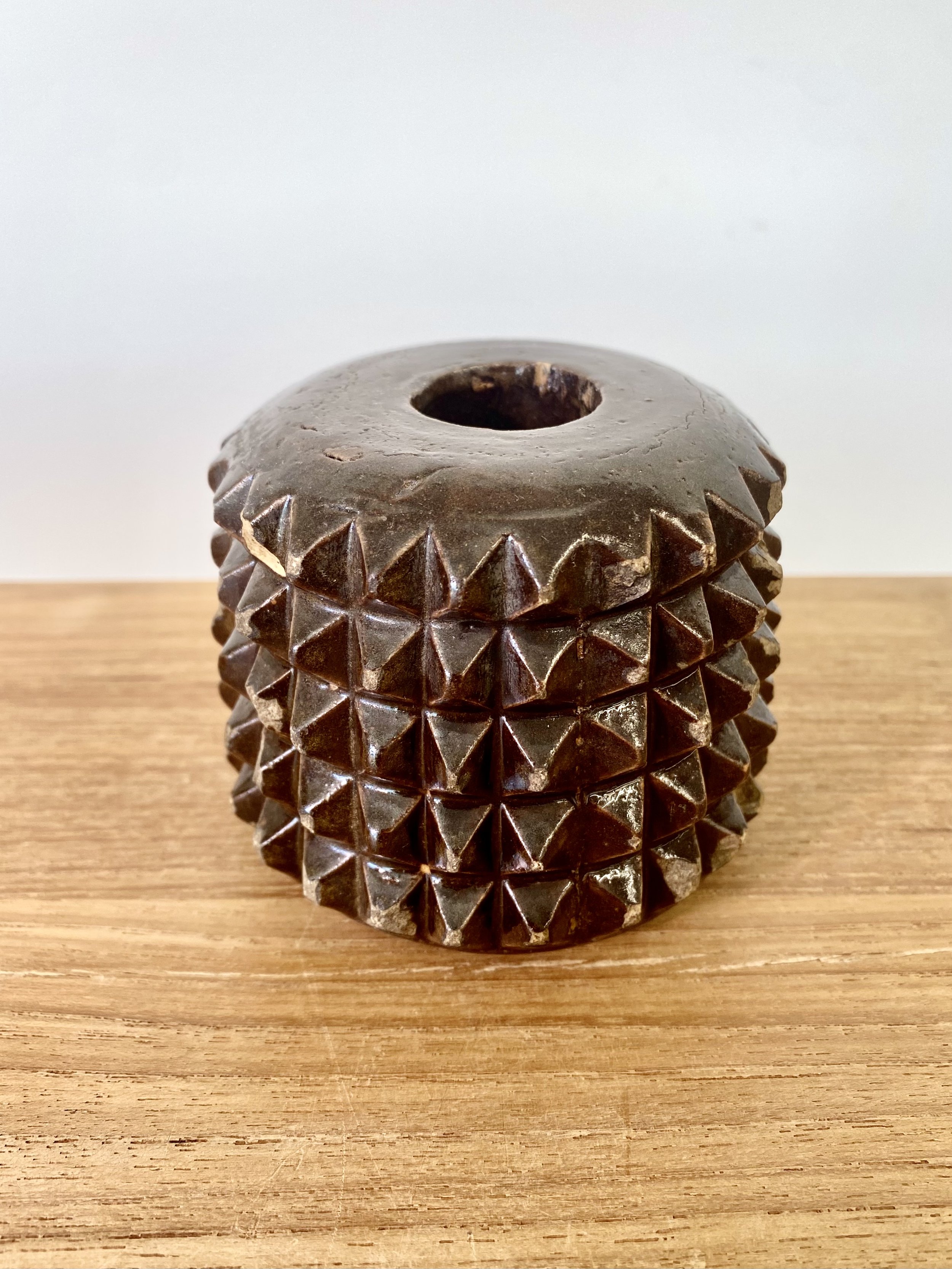 Image 1 of 4
Image 1 of 4

 Image 2 of 4
Image 2 of 4

 Image 3 of 4
Image 3 of 4

 Image 4 of 4
Image 4 of 4





Knobby Knurled Readymade
Knurled ceramic head from a 19th century meat pounder. Meat-pounding was very important back in the day, because people typically ate the "whole animal," and a lot of that animal was pretty tough! Also, people had fewer teeth, generally.
You're probably familiar with knurling from the handles of certain tools, sporting equipment, pistol, grips, etc. This cross-hatched texture provides a better grip on objects which need to be manipulated by hand. Though now done by machines, knurling was originally done by hand-filing patterns into metal, wood or stone. The term comes from Middle English knaur, meaning "wood knot" or "rock crag." This is also the source of "gnarly" — a very important word in the lexicon of surfers!
This meat pounder bears a striking resemblance to a mace head (no pun intended). The mace was a weapon common to many ancient cultures around the world. It's essentially a club with a stone head, which rendered it more lethal. There were an infinite number of designs, but the knurled pattern was quite common, especially in Pre-Columbian Mexico and Peru.
Knurled ceramic head from a 19th century meat pounder. Meat-pounding was very important back in the day, because people typically ate the "whole animal," and a lot of that animal was pretty tough! Also, people had fewer teeth, generally.
You're probably familiar with knurling from the handles of certain tools, sporting equipment, pistol, grips, etc. This cross-hatched texture provides a better grip on objects which need to be manipulated by hand. Though now done by machines, knurling was originally done by hand-filing patterns into metal, wood or stone. The term comes from Middle English knaur, meaning "wood knot" or "rock crag." This is also the source of "gnarly" — a very important word in the lexicon of surfers!
This meat pounder bears a striking resemblance to a mace head (no pun intended). The mace was a weapon common to many ancient cultures around the world. It's essentially a club with a stone head, which rendered it more lethal. There were an infinite number of designs, but the knurled pattern was quite common, especially in Pre-Columbian Mexico and Peru.
Knurled ceramic head from a 19th century meat pounder. Meat-pounding was very important back in the day, because people typically ate the "whole animal," and a lot of that animal was pretty tough! Also, people had fewer teeth, generally.
You're probably familiar with knurling from the handles of certain tools, sporting equipment, pistol, grips, etc. This cross-hatched texture provides a better grip on objects which need to be manipulated by hand. Though now done by machines, knurling was originally done by hand-filing patterns into metal, wood or stone. The term comes from Middle English knaur, meaning "wood knot" or "rock crag." This is also the source of "gnarly" — a very important word in the lexicon of surfers!
This meat pounder bears a striking resemblance to a mace head (no pun intended). The mace was a weapon common to many ancient cultures around the world. It's essentially a club with a stone head, which rendered it more lethal. There were an infinite number of designs, but the knurled pattern was quite common, especially in Pre-Columbian Mexico and Peru.